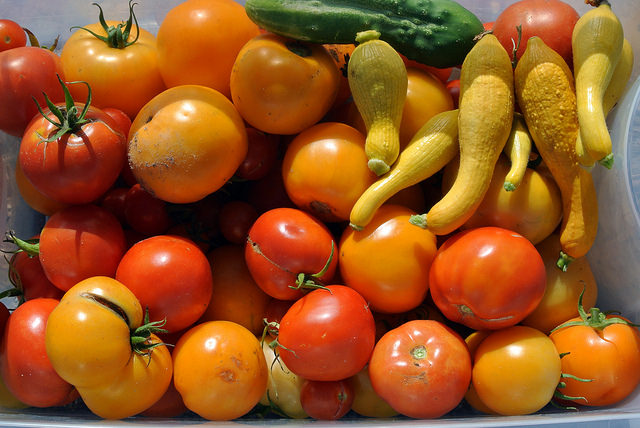7 Tips for Harvesting Your Crops in Little Rock, AR

As the daylight hours wane and your garden begins to die back in Little Rock, you may be wondering about the best, most efficient way to harvest your hard-earned bounty. Late summer and fall crops are some of the best-tasting, most nutrient-dense fruits, and vegetables imaginable.
You likely don’t want any of that to go to waste because you are unsure of the best way to harvest and preserve your crops! Follow our tips for a successful harvest this year, as well as in the years to come.
1. Know When Your Crops Are Ripe
Delay harvesting as long as possible - but not too long. Knowing when your crops are ripe is the easiest way to tell if they are ready, but for some plants, this can be tough. While it’s easy to tell if tomatoes are ready by simply looking for a plump fruit with vibrant red coloring, other plants can be trickier.
Root crops are typically done growing when the tops die back. Once the foliage of plants like potatoes, carrots, and radishes have become spent, wait another week or two. Waiting will allow the vegetables to cure in the ground and will ensure a longer-lasting crop.
For other plants, consult your local cooperative extension or growing guide to make sure you are waiting an appropriate amount of time for your given corp. That way, you won’t have to worry about harvesting under- or overripe plants by mistake.
2. Wait (if necessary) for a sweeter harvest
Delay harvesting as long as possible, because fruits and vegetables at their peak maturity will store much longer and be of a higher quality than those that were harvested prematurely or too late. Don’t be overzealous! Some plants, like broccoli and kale, actually taste better once a light frost has grazed them. Many can even weather more extended periods of cold weather, so be sure to consult your local zone growing guides before jumping to get everything harvested all at once.
3. Be Careful With Stems
As much as possible, exercise caution when harvesting, transporting and storing your produce. The fewer nicks, dents, or bruises a fruit or vegetable has, the longer it can remain in storage before going bad. This is especially true of produce with hard rinds, like squashes, which can keep for several months as long as they remain unblemished.
4. Remember to return
Some plants can be harvested over and over again–make sure you pay a return trip or two to the garden to benefit from a repeated bounty. Crops like kale, berries, and beans will give you endless harvests, so it’s important to remember that these aren’t a one-time harvest.
5. Harvest High-Quality Vegetables
The quality of your stored produce will only be as good as the quality of it when initially stored. Rotting vegetables can’t be stored for very long, and even worse, can spread disease and cause premature spoilage in other surrounding produce. Avoid preserving any dented, bruised, or nicked produce, and try to eat that right away to prevent any problems.
6. Wash and Dry Your Produce
For any fruits and vegetables that you are storing in the refrigerator, freezer, or as a canned good, remember to wash it first thoroughly. If you’re storing food in the fridge, make sure you also dry it to prevent rot from setting in. Keep in mind that some types of produce don’t need to be washed before storage, and store better with a little dirt left on them. Items that don't need a wash prior is true for crops like potatoes, squashes, and pumpkins, all of which benefit with a light, protective layer of dirt around them. Although, be cognizant of any fertilizers or herbicides you may use prior and wash accordingly.
7. Pay Attention to Storage Duration
Some fruits and vegetables can store just about forever if kept in a cool, dry location like a root cellar or temperature- and moisture- controlled place like a basement. Onions, potatoes, squashes, carrots, apples, and beets all fall into this category. You can expect to keep these foods for anywhere up to eight months.
However, other plants, like tomatoes, lettuce, and peas, have much shorter storage timelines and must be kept in a more controlled environment, like a refrigerator. Research each crop’s specific storage requirements, and be sure to adhere to them; this will help to ensure your plants stay fresher and more nutritious.
As the winter approaches and you close out the growing season, you should take pleasure in your hard-earned bounty. Fire up the stove, and get to preparing some delicious meals out of your fresh, tasty produce.
If you're in Little Rock this harvesting season, learn how Little Rock Lawn Care can service your lawn!
Photo Source: Flickr
Areas we service near Little Rock